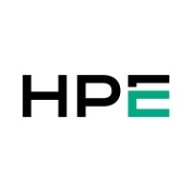

HPE OneView and LogicMonitor compete in the IT infrastructure management and monitoring category. LogicMonitor appears to have the upper hand due to its extensive integration capabilities and strong technical support.
Features: HPE OneView provides centralized management with a single-pane-of-glass capability, environment monitoring, and rapid deployment. LogicMonitor stands out with its robust dashboard functionalities, customized data sources, and granular alert tuning.
Room for Improvement: HPE OneView users seek improved support for older hardware, enhanced reporting capabilities, and integration with non-HPE platforms. LogicMonitor users desire better reporting, expanded mapping features, and more affordable licensing for large-scale deployments.
Ease of Deployment and Customer Service: HPE OneView is primarily for on-premises use with mixed feedback on tech support. LogicMonitor supports hybrid and public cloud environments with ease of deployment and responsive technical support.
Pricing and ROI: HPE OneView has straightforward pricing models and offers good ROI despite some concerns about cost per server. LogicMonitor is seen as a premium solution with a flexible licensing model providing strong ROI, though it may be costly in large environments.
The return is more of value and savings in preventing costly downtime, making the savings of about $60,000 which we would have lost without LogicMonitor, and in IT staff efficiency, we save approximately 15 hours a week.
I can definitely notice a difference in our posture, uptime, and ability to solve problems and resolve outages much quicker since we have had LogicMonitor in place.
The customer service and support have been responsive.
The technical support for HPE OneView rates as an 8 on a scale from 1 to 10, where 1 is the worst and 10 is the best.
I would give the quality of HPE OneView's technical support an eight out of ten rating, indicating good customer service and support in my opinion.
Customer support is on point and very well trained.
Customer support is good, but escalations within customer support are not so good.
The product mostly just works without issues.
HPE OneView is highly scalable, especially useful for organizations with large infrastructures.
HPE OneView is a scalable solution since you can integrate any number of servers based on your license.
Scalability is fine as we can add Synergy frames and extend many frames as needed.
They are not licensed, so you could deploy one collector or 1,000 collectors for the same cost.
LogicMonitor scales well
The stability of the blades is concerning; we have frequent issues with blades having memory or power issues.
HPE OneView is a stable solution that works efficiently.
It supports unified monitoring effectively but may have areas for enhancement.
It is very stable. I have never seen LogicMonitor itself go down.
The upgrade process is lengthy, requiring careful planning as we cannot match ESXi versions without aligning OneView first, leading to delays.
From the dashboard and reporting perspective, HPE OneView could be improved by having multiple modules rather than just a single customization option.
I believe the prices of HPE OneView should be reduced, as it is quite expensive.
The container monitoring seems to be really behind compared to some bespoke cloud-native monitoring solutions that are designed around Kubernetes, containers, and ephemeral environments.
If LogicMonitor looks into going beyond the topology-based correlation to include AI that can group related alerts from different parts of the stack into a single probable cause incident, that will significantly improve the system.
LogicMonitor can be improved by having more meetings with customers to find out what they really need.
Customers need to pay a substantial amount for the licenses, especially when monitoring a large number of servers and storages.
Our main concern is managing expenses related to the VMware licensing model which affects blade usage.
I experienced no issues with pricing, setup cost, and licensing; it was very transparent, and the licensing model is very clear and easy to understand.
I can monitor everything in one view, which has significantly improved operational efficiency for us.
There is more feasibility when using HP Service Manager because, unlike other tools with predefined standards for script writing, we have the option for customization as per our choice, and dashboard reports can be customized.
This approach makes the upgrade process straightforward and efficient.
The dynamic alerting and root cause analysis have helped us fix issues before they cause a full-blown outage or degrade performance for end users.
LogicMonitor has expanded our view of our systems and has reduced our mean time to resolution, as now engineers that work on specific issues are able to very quickly identify what the cause is.
If you need to troubleshoot, or if the Logic Module does not work exactly as needed, you can go in, look at the code, and fork that Logic Module to adjust the Groovy code to do exactly what you need.
| Product | Market Share (%) |
|---|---|
| HPE OneView | 1.4% |
| LogicMonitor | 2.1% |
| Other | 96.5% |


| Company Size | Count |
|---|---|
| Small Business | 22 |
| Midsize Enterprise | 15 |
| Large Enterprise | 51 |
| Company Size | Count |
|---|---|
| Small Business | 11 |
| Midsize Enterprise | 10 |
| Large Enterprise | 9 |
HPE OneView is your infrastructure automation engine to simplify operations, increasing the speed of IT delivery for new applications and services. Through software defined intelligence, HPE OneView brings a new level of automation to infrastructure management by taking a template driven approach to provisioning, updating, and integrating compute, storage, and networking infrastructure. Designed with a modern, standard-based API and supported by a large and growing partner ecosystem, HPE OneView also makes it easy to integrate powerful infrastructure automation into existing IT tools and processes. Take command with HPE OneView to deploy infrastructure faster, simplify operations and increase productivity.
HPE OneView innovations provide you the industry’s best infrastructure management experience, simplifying operations for HPE BladeSystem, HPE ProLiant servers, 3PAR storage, HPE Networking and HPE ConvergedSystems.
LogicMonitor offers flexible IT monitoring with customizable dashboards and robust alerting capabilities. It integrates seamlessly with third-party apps like ServiceNow and provides a single-pane view for diverse IT environments, aiding in proactive issue resolution and enhancing operational efficiency.
LogicMonitor stands out with its capability to monitor diverse infrastructures including Cisco Voice systems, data centers, and virtual environments. Supporting servers, storage, networking devices, and applications, it provides seamless integration with cloud services like AWS and Azure. Users leverage its scalability and flexibility, benefiting from dynamic thresholds, anomaly detection, and detailed visualization. All these features contribute to improved management of IT assets and streamlined operations. Users suggest improvements in mapping, reporting, and automation for remediation, desiring more customizations and an expansive application performance monitoring toolset.
What are LogicMonitor's key features?LogicMonitor is widely implemented across industries, providing monitoring for infrastructure in sectors like telecommunications, cloud computing, and managed services. Managed service providers particularly value its ability to track client environments, deliver proactive alerts, and generate comprehensive reports, while its integration with cloud platforms like AWS and Azure offers users centralized management and visibility into IT assets worldwide.
We monitor all IT Infrastructure Monitoring reviews to prevent fraudulent reviews and keep review quality high. We do not post reviews by company employees or direct competitors. We validate each review for authenticity via cross-reference with LinkedIn, and personal follow-up with the reviewer when necessary.